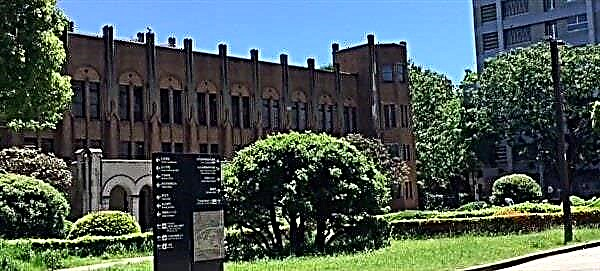Of all the Baltic countries, Estonia most often attracts the attention of investors, tourists and people who want to go to work. The attractiveness of Estonia is associated with the safety of life, good ecology, social security and a fairly high standard of living.
Economic situation
The Estonian economy has been developing steadily in recent years. After the country's accession to the EU, there has been a constant increase in the well-being of its citizens. The negative aspect of joining the European Union was the outflow of the able-bodied population. This led to a shortage of labor in a number of industries, especially in production, construction, and agriculture. Immigrants from neighboring countries are actively involved in the vacated jobs. Average salary in 2021 reached 1242 €.

Salary per month by occupation in 2021
The highest indicators of average wages were recorded among officials, as well as in the field of information technology and the financial sector. The smallest are in trade and services.
Minimum
From January 1, 2018, the amount of the minimum monthly wage increased from 470 to 500 euros... The minimum hourly wage is 2.97 €.
Average
Monthly earnings fluctuate depending on the profession. So, in the first quarter of 2021, it was before taxes:
| Profession | Payment, € / month |
| Doctor | 1664 |
| Nanny | 470 (minimum wage) |
| Guide | 636 |
| Housemaid | 512 |
| Teacher | 971 |
| High school teacher | 1026 |
| Taxi driver | 954 |
| Dentist | 1692 |
| Loader | 870 |
| Engineer | 1300 |
| Nurse | 922 |
| Welder | 1121 |
| Programmer | 2000 |
| An electrician | 993 |
| Policeman | 1003 |
| Worker | 778 |
| Salesman | 700 |
| Fireman | 788 |
| Driver | 945 |
| Lawyer (attorney) | 1443 |
| Driver | 1235 |
| Accountant | 993 |
| Builder | 992 |
For seasonal workers, hourly wages fluctuated from 2.97 to 18 €.

There is a significant gap in the wages of men and women, it reaches 25%.
You May Also Like
Average starting
The starting wage level depends on the qualifications required to complete it. The more complex professional responsibilities and the longer it takes to master them, the wider the gap between the average and starting wages. It can reach 20% during the internship. Most often, graduates of educational institutions and newcomers with no work experience face the problems associated with low start-up fees.
Maximum
There are no officially approved salary limits. Monthly earnings over 2250 euro in the capital, and over 1600-1800 for Tartu and other cities of the country it is considered high.
Payment for labor in different counties
Almost a third of Estonia's population is concentrated in Tallinn, where government bodies and the offices of leading commercial enterprises are located. This led to a significant gap in the average salary in the capital and its suburbs from the rest of the country. So, in 2019 it was 1353 euros.
The next city in terms of salaries is Tartu, where on average residents earn 1215 euros.
The most modest earnings were earned by residents of Saremaa, Jõgevamaa and Põlvamaa counties, which amounted to 880-900 euros.
Payroll taxes
Several types of tax payments are withheld from wages in Estonia:
- Income tax.
- Unemployment insurance.
- Pension contributions.
Only income tax is deducted from the salary of non-resident employees in the amount of 21%... If such an employee works under a contract outside Estonia, this deduction is not made.
Income tax
You May Also Like
The personal income tax rate is 20%... But from January 1, 2018, a tax-free amount has been established, which is up to 500 Euro for those whose wages do not exceed 1200 euros... If the gross salary (before taxes) is greater 1200 eurosbut does not reach 2100, the non-taxable minimum is reduced by the coefficient - to 14%.
To calculate the size of the non-taxable minimum, you can use the formula 500-500 / 900 * (X - 1200), where X is the amount of monthly wages.
If the monthly wage is higher EUR 2100- the tax is paid on the whole amount. Since annual income is taken into account, it includes all bonuses, vacation pay, disability payments.

Social contributions
Main taxes in Estonia in 2021:
- corporate income tax -0%;
- value added tax (VAT) -20%;
- social tax rate -33%;
- withholding tax rate -20%;
- income tax on dividends - rate20/80;
- unemployment tax (employee) -1,6%;
- unemployment tax (employer) -0,8%;
- 2nd pillar accumulative pension fund -2%;
- the amount of income tax-free from January 1, 2018 -500 euros / month;
- minimum wage from January 1, 2018 -€ 500 gross (or € 2.97 per hour);
- tax-free daily allowance for business trips abroad -50 euros during the first 15 days and 32 euros each subsequent.
For employees, the unemployment insurance premium is 1,6% from the amount of the salary. Non-resident workers are exempt from it.
Pension contributions for Estonian residents are set at 2% from monthly earnings.
Salary-to-cost ratio
To understand the standard of living that a job in Estonia can provide, one should take into account the main cost items:
- rental of property;
- communal payments;
- nutrition;
- travel.
Rental of property
In the capital, the rental price is:
- Studio - 330–470€.
- 2-room apartment - 440–625€.
- 3-room apartment - 550–780€.
Rented housing in Tartu and other cities will be significantly lower - 250-300 euros.
Communal payments
The amount of payments changes depending on the season. In winter, payments will be higher due to heating bills. On average, in winter for a one-room apartment in which two people live, you will have to pay 100 euro.

Nutrition
Expenses for food are the item of expenditure that depends to the greatest extent on personal preferences. But on average, monthly food costs are about 200 euros.
- meat - 4,5–8€;
- cheese - 6–9€;
- milk -0,6-0,7€;
- eggs -1 € / dec .;
- apples - 1€;
- potato - 0,5€;
- beer - 1-1,5€.
Travel
Maintaining a personal car in Estonia is quite expensive due to the high cost of gasoline and parking.
Public transport fares - about 2 euros, to holders of a student or school card - 50% discount.
Unemployment rate
The unemployment rate in Estonia is lower than in other Baltic countries. The national average does not exceed 5%... But in some cities, for example, in Narva, it reaches 7–8%.
Washing out the working-age population leaving to work in the EU opens up opportunities for visiting workers. The most in demand are skilled workers, programmers, doctors.
The average salary in Estonia is EUR at the beginning of 2021. This indicator is expected to grow. The highest salaries are paid to residents of Tallinn, the lowest - to residents of Saremaa, Jõgevamaa and Põlvamaa. The highest payment for the work of programmers, financial workers. The lowest earnings are in trade and services.











